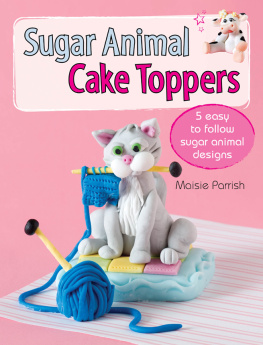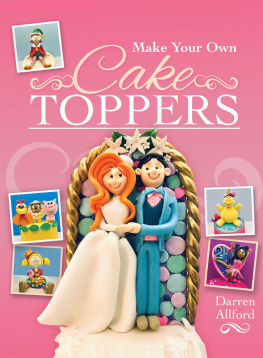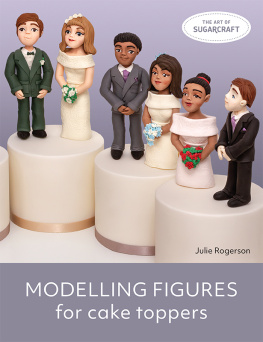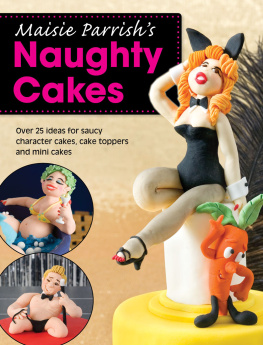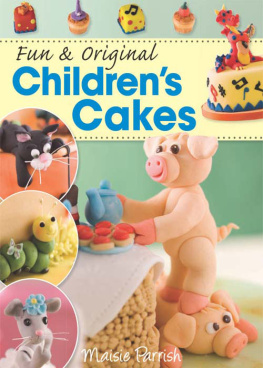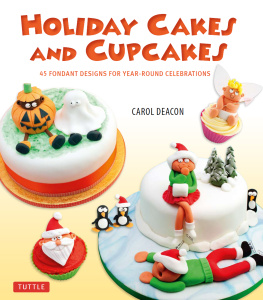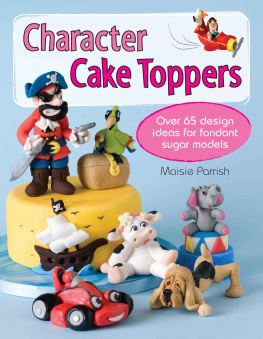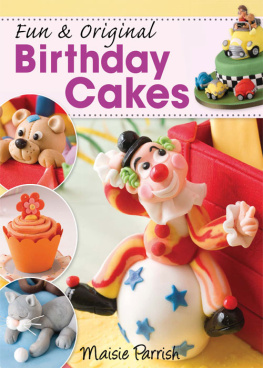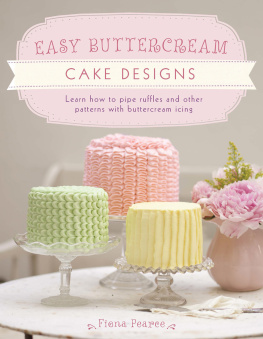Sugarpaste is a firm, sweet paste that is very soft and pliable and marks very easily. It is a very adaptable product and when it is used for modelling, especially for body parts or items that need support, we must add CMC (Tylose). All the models in this book are constructed using ready-made modelling paste wherever possible, as this is a most convenient and efficient way to achieve good results. This product does not need to have CMC added to it.
How lucky we are to be able to purchase sugarpaste in so many beautiful colours just take it out of the packet and away you go! Of all the ready-made pastes on the market, the brand leader is Renshaws Regalice (see ) and what a fantastic new range they have for us. The paste is very easy to work with and is of excellent firm quality.
Tip
Very dark colours, such as black, dark blue and brown, are particularly useful to buy ready-coloured, because if you add enough paste food colouring into white to obtain a strong shade, it will alter the consistency of the paste and make it more difficult to work with.
Making your own
While the ready-made sugarpaste is excellent, you can, of course, make your own at home. The bonus of this is that you can then tint your paste to any colour you like using edible paste food colour (see ) This can then be dusted with edible dust food colour to intensify or soften the shade.
Sugarpaste Recipe
900g (2lb) sifted icing (confectioners) sugar
120ml (8tbsp) liquid glucose
15g (oz) gelatin
15ml (1tbsp) glycerine
45ml (3tbsp) cold water
1. Sprinkle the gelatin over the cold water and allow to sponge. Place over a bowl of hot water and stir with a wooden spoon until all the gelatin crystals have dissolved. Do not allow the gelatin mixture to boil.
2. Add the glycerine and glucose to the gelatin and water and stir until melted.
3. Add the liquid mixture to the sifted icing (confectioners) sugar and mix thoroughly until combined.
4. Dust the work surface lightly with icing sugar, then turn out the paste and knead to a soft consistency until smooth and free of cracks.
5. Wrap the sugarpaste completely in cling film or store in an airtight freezer bag. If the paste is too soft and sticky to handle, work in a little more icing sugar.
Quick Sugarpaste Recipe
500g (1lb 1oz) sifted icing (confectioners) sugar
1 egg white
30ml (2tbsp) liquid glucose
1. Place the egg white and liquid glucose in a clean bowl. Add the icing (confectioners) sugar and mix together with a wooden spoon, then use your hands to bring the mixture into a ball.
2. Follow steps 4 and 5 of the Sugarpaste recipe for kneading and storage.
Sugarpaste for modelling
To convert sugarpaste into modelling paste, all you need to do is add CMC (Tylose) powder (see ) to the basic recipe. The quantity needed will vary according to the temperature and humidity of the room, so you may need to experiment to get the right mix depending on the conditions you are working in. As a guide, add roughly 5ml (1tsp) of CMC to 225g (8oz) of sugarpaste and knead well. Place inside a freezer bag and allow the CMC to do its work for at least two hours. Knead the paste well before use to warm it up with your hands; this will make it more pliable and easier to use.
If you need to make any modelled parts slightly firmer, for example if they need to support other parts, knead a little extra CMC into the sugarpaste.
Throughout this eBook I have used the combination of sugarpaste and CMC powder, and find it works very well. If you add too much CMC to the paste it will begin to crack, which is not desirable. Should this happen, knead in a little white vegetable fat (shortening) to soften the paste and make it pliable again.
Colouring sugarpaste
Whether you choose to make your own, or to buy ready-made sugarpaste, the white variety of both forms can be coloured with paste food colours to provide a wonderful spectrum of shades.
Solid Colours
1. Roll the sugarpaste to be coloured into a smooth ball and run your palm over the top. Take a cocktail stick (toothpick) and dip it into the paste food colour. Apply the colour over the surface of the sugarpaste. Do not add too much at first, as you can always add more if required.
2. Dip your finger into some cooled boiled water, shaking off any excess and run it over the top of the colour. This will allow the colour to disperse much more quickly into the sugarpaste.
3. Dust the work surface with a little icing (confectioners) sugar and knead the colour evenly into the sugarpaste.
4. The colour will deepen slightly as it stands. If you want to darken it even more, just add more paste food colour and knead again.

Marbled Effect
1. Apply the paste food colour to the sugarpaste as directed above, but instead of working it until the colour is evenly dispersed, knead it for a shorter time to give a marbled effect.
2. You can also marble two or more colours into a sausage shape, twist them together and then roll into a ball. Again, do not blend them together too much. Cakes and boards look particularly nice when covered with marbled paste.

Tip
When colouring white sugarpaste, do not use liquid food colour as it will make the paste too sticky.
Painting on sugarpaste
There are various different ways of painting on sugarpaste. The most common way is to use paste food colour diluted with some cooled boiled water, or you can use liquid food colours and gels. There are also some food colour pens available, but these tend to work better on harder surfaces. Another way is to dilute dust food colour with clear alcohol. I have enjoyed using a new product for painting on sugarpaste: Rainbow Dust food colour. It is a metallic range of water-soluble paint in the most beautiful shades. Just paint it on and give your work a really eye-catching look.
Brushes
For painting fine lines such as eyelashes, use a no.0000 sable paintbrush. The finer and better quality the brush, the better job you will make of it. To dust the cheeks of my figures I use a cosmetics brush, which has a sponge at one end and a brush at the other. For less detailed work, you can use a variety of sable brushes in different widths.

